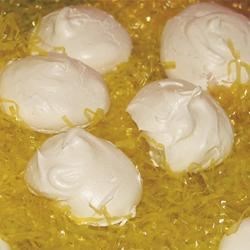1. LET GO OF FINISHED PRODUCTS. If you are giving your child an art project that is supposed to have a specific finished product at the end, it is not an art project, it is a craft. Don't get me wrong, crafts are fun and they're good for teaching children to follow instructions and build fine motor skills and they're good for creativity. But it's like the debate between organized sports and free play. Anything that flows straight from the child is better for creativity. You can still do crafts and specific art projects with your children, but make sure you also allow them the freedom to create their own art. The division should be at least 50/50, if not higher in free-art's favor.
This pillow was so good for Jane. It was creative. But she needs opportunities to create without me giving all the instructions.
3. LET GO OF DISORDERED MATERIALS. I know, I know. This seems like a contradiction of number two, but it's not. I've noticed that when the art supply cabinet gets messy and disordered, with everything thrown in haphazardly, the creativity in my house goes way down. Why? Because nobody can find what they need! And if it is too hard to pull out the materials, creativity won't happen. Which leads me to...
4. LET GO OF BEING THE SOLE ARBITER OF CREATIVE SUPPLIES. Sure, one of your kids thinks he's Michaelangelo. I get it. I've got one of those and I can't tell you how much crayon I've scrubbed off the walls. And when this habit is in it's beginning 24/7 stage, maybe put the crayons on the fridge. But allowing your children to pull out their own supplies whenever the need hits them not only allows creativity to blossom, but independence as well. It also gives you one less thing to "find" for someone. Remember, out of sight, out of mind. We don't want that with creativity!
5. LET GO OF A SET IDEA OF WHAT CREATIVITY LOOKS LIKE. Creativity is not always busy. It's not always taken up in art or music. There are many pursuits that are creative, even though we don't usually view them as such. Building with legos, making up songs or games, creating a business, teaching. These are all extremely creative. Reading is a creative process, as is being in nature. Appreciate all of creativities forms in your children and in yourself.
6. LET GO OF BEING TOO BUSY. This last piece of wisdom had been sprouting in my heart for a few days when Jane really brought it to fruition. One night before bed, I asked her why she hadn't been doing as much art lately. She replied, "There's just been so much other stuff to do. Fun stuff. I don't get to think about the art in my head."
I was floored. So much wisdom.
People, a jam-packed busy schedule does not allow creativity to bloom. Creativity takes place in the quiet spaces and margins of our day. It's that idea you get on a walk, or the picture in your head that you see between awake and asleep. It takes down time to look at something from every angle and then put it on paper.
Your children need some time in their day to reflect and then create from that reflection. You do, too. Give it to them.













